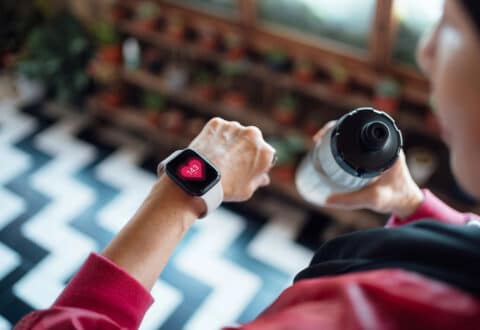Wellness marketing requires an insightful and personal strategy as unique as each individual wellness brand. Successfully connecting with target audiences requires authenticity, emotional intelligence and multiple touchpoints. Wellness is rarely about a transaction, but rather about making a lifestyle change, finding empowerment or embracing a new challenge. Inspiring audiences to take these steps requires comprehensive, insightful wellness marketing strategies. Discover the best marketing ideas for health and wellness companies and how to apply them to your brand.
Why Marketing Matters for Health and Wellness Businesses
Already a billion-dollar industry, the wellness space is poised to continue growing at a rapid pace. Thanks to increasing consumer awareness and innovative technology, new health and wellness companies are forming to help people achieve their health goals. From digital fitness, wearable technologies and meal kit deliveries to telehealth, meditation apps and expanded mental health services, health and wellness businesses are continuing to innovate to meet customers where they are — at home, on the go and at work.
Today’s health and wellness consumers are smarter than ever. They value authenticity, personalization, expertise, convenience and flexibility. That’s why the need for effective wellness marketing strategies has never been more important. From strategic digital marketing to creative healthcare marketing, taking a marketing approach that effectively resonates with target audiences at the right time is key to staying competitive in a saturated market brimming with thoughtful, passionate consumers.
The Impact of the COVID-19 Pandemic on The Health and Wellness Industry
There’s no denying that the COVID-19 pandemic transformed the health and wellness industry for the better. In fact, it’s booming. From spending more time at home and highlighting the ongoing need for personalized self-care to underscoring the importance of physical and mental health, consumers have reprioritized spending to health and wellness from other categories, such as fashion and travel. According to estimates from IMARC Group, the global health and wellness market is expected to reach a value of $4.24 Billion by 2026. And companies are forming every day to meet the growing demand for health products and wellness spaces. Here are some of the major trends in the industry since the COVID-19 pandemic.
More Wellness Goals
Lockdowns, outbreaks and more time spent in solitude have highlighted the tremendous importance of self-care. Consumers are craving a holistic approach to health that considers our overall wellness — it’s not just how we’re doing, but how we feel. From supplements, vitamins, wellness coaches, mental health and more, self-care products and services that make consumers feel good are at an all-time high.
Powerful Digital Era
While the world was already heavily digital, the pandemic took it to a whole new level. Consumers want digital access to their health and wellness products and services and brands are constantly rolling out new innovations to meet those demands. From telemedicine and wellness apps to virtual fitness classes, digital health and wellness services continue to skyrocket.
Prioritizing Cardiovascular Health
A major shift in the healthcare sector since the COVID-19 pandemic is a greater consumer focus on cardiovascular health. Because a weakened immune system is a COVID-19 symptom, patients with cardiovascular disease and obesity are particularly vulnerable. More than ever, the pandemic has highlighted the importance of annual healthcare appointments, well-rounded nutrition and a commitment to physical fitness.
Equal Balance of Mental and Physical Health
When the world slowed down at the start of the COVID-19 pandemic, people took the time to evaluate their physical and mental health needs in new ways. From removing toxic products to embarking on therapy for the first time and better understanding how our bodies respond to stress and anxiety, today’s health and wellness consumers are more aware of their mental and physical health state and needs.
10 Best Marketing Ideas to Boost Your Health and Wellness Services
Similar to health-based decisions, connecting with audiences requires authenticity, emotional intelligence, and often, multiple touchpoints. Effective health and wellness marketing requires a comprehensive approach that aligns brand identity and mission with your unique audience’s goals and passions. For optimal results, a purpose-led wellness marketing strategy should leverage a behavior design-informed perspective that taps into intrinsic motivation to engage audiences based on shared values and insights that spark action. Explore how you can apply the top wellness marketing ideas to your organization:
1. Clean Up Your Email Database
Your email list is only as good as its accuracy. Regularly sweep your email list to remove undeliverable, duplicate and incorrect email addresses. A clean email database is vital for both email marketing deliverability and list segmentation marketing efforts on social media. When your email list is as accurate and robust as possible, your content marketing strategy will achieve higher results.
2. Embrace Email Marketing
Email is an incredibly effective channel for wellness businesses to reach potential clients and customers and stay in touch with existing ones. A consistent and thoughtfully crafted email presence can contribute to your overall online marketing strategy. Check out how the National Multiple Sclerosis Society utilized email marketing as part of an overall digital marketing healthcare strategy to bring audience members to a variety of resources designed to provide essential information, increase access to the community and ease the anxiety of navigating a diagnosis.
3. Re-evaluate Social Media Channels
When was the last time you evaluated your social media platforms to ensure you’re reaching your target audience and creating content that truly resonates? Take a look at your current social media channels and see if there are new ones to connect with your current community and potential customers. Don’t downplay the power of social media to help your brand achieve its marketing goals. Recent research reveals 64% of consumers want brands to use social media to connect with them.
No matter which social media platforms you utilize, make sure your information is updated, your posts are engaging and consistent and they all feature your cohesive brand standards.
4. Optimize Mobile
Did you know Google ranks mobile-optimized sites higher in search results? Mobile devices also account for 66% of email opens, and 96% of active user accounts worldwide access Facebook via mobile devices. In other words, wellness consumers expect a streamlined mobile experience. To compete in today’s crowded environment, you have to invest in your mobile brand presence.
5. Tap Into Influencer Marketing
Is your brand utilizing the power of influencer marketing? In today’s increasingly digital world, influencer relations provide old-fashioned referrals and recommendations from real people on a large scale. With increasingly crowded and competitive marketplaces, ad-blocker usage on the rise and the decline of organic reach across social media channels, harnessing the reach of micro-influencers is an effective online marketing strategy that offers brands a path to reach target audiences in more authentic and meaningful ways.
6. Create Educational Content
Content marketing is still king, but educational content that provides unique and ongoing value is the secret ingredient that will help wellness businesses stand out against their competitors. Did you know consumers are 131% more likely to purchase from a company right after they consume early-stage, educational content? It’s hard to argue with that! Make sure your marketing approach includes a killer content marketing strategy. With carefully planned, purposeful content your organization can inform and empower consumers along their health and wellness journeys.
7. Provide Consistent Value
Building off educational content, the best healthcare and wellness marketing ideas include value ads for audiences. In other words, tell more than you sell to construct a purpose-led marketing strategy. Did you know only up to 20% of your posts on Instagram should be promo-related? The bulk of your organization’s posts should be focused on providing value and building a connection with your audience.
8. Harness Multiple Campaigns
Holistic health isn’t linear — and your marketing campaigns don’t need to be either. Integrating multiple campaigns at once as a part of a larger strategy with different touch points can help maximize your message. However, once you begin running multiple campaigns, the level of marketing complexity increases and it can make sense to partner with an agency that works specifically with health and wellness businesses to transform your wellness marketing ideas into tangible results.
9. Invest in Video
Don’t overlook the power of video and the flexibility the medium provides – from web, social media, and even on-site installations, digital video marketing is one of the most impactful ways that brands can create awareness, build an audience and drive people toward a cause or call to action. In addition to boasting high click and conversion rates, videos offer an engaging way to share your brand story beyond words.
10. Leverage User-Generated Content
The potential for customer loyalty is tremendous in the health and wellness space. Capitalize on hard-earned customer loyalty with user-generated content (UGC). In fact, entire campaigns can be created with UGS — from Instagram posts tagging the brand to hashtags to unboxing and testimonial videos. Research reveals UGC campaigns achieve 29% higher web conversions than campaigns or websites without it.
Health and Wellness Marketing Tips for Maximum ROI
Not sure where to start to transform your wellness and healthcare marketing ideas into effective marketing strategies? Focus on strategies that will give you the most bang for your buck. Check out these top tips to maximize your return on investment:
Hone in on Your Brand Guidelines
Take the time to develop your brand — or brand when necessary. From personality, colors, logo, website, voice and tone, how do you want consumers to see and interact with your brand?
Understand Your Target Audience
You can’t create an effective marketing strategy without knowing exactly who you are marketing to. Next, work to identify your target audience’s pain points and how you can help solve them. Be as specific as possible when describing your ideal customer, including age, profession, hobbies and interests, likes/dislikes, main concerns, etc.
Connect Through Storytelling
Consumers want authenticity and brand storytelling is how wellness organizations can provide that connection and build trust. Share real stories about how your brand has transformed customers’ lives; be transparent about how your products are made or the why behind your services; and use data to back up your claims.
Leverage the Most Impactful Social Media Channels
When executing your wellness marketing strategies with social media, it’s important to consider the right channels for your brand. You aren’t going to reach Baby Boomers on TikTok or Gen Z on Facebook. Make sure you have a presence where your audience is spending most of their time online. Instead of having a presence on every social media platform, build out the select few that are most popular with your audience.
Partner With a Health and Wellness Marketing Agency
Investing in an expert partner can take your organization to the next level. No matter the size of your organization, an award-winning marketing agency can provide seasoned expertise and a keen perspective to create and execute a personalized wellness marketing strategy that will help you reach your goals.
FAQs About Health and Wellness Marketing
How Do I Market My Holistic Business?
Your marketing approach should start with your why — wellness is personal and consumers are craving authenticity. Share genuine content that tells your story in a compelling way to generate brand loyalty.
How Do You Attract Patients to Your Clinic?
Start with this trifecta — digital marketing, public relations and social media. Whether it’s web content, a blog, video or social media platforms, find creative ways to tell your story. Then, blend organic and paid strategies to optimize your content — reaching and resonating with your target audience.
How To Develop a Wellness Marketing Strategy in a Post-COVID Era?
Lean into your digital and social media channels. Where is your target audience spending their time? That’s where you need to be. What do your customers need to hear? Find engaging ways to share that message with them. Where can you get the most bang for your buck? That answer should jumpstart your online marketing strategy.
Is It Really the Right Time to Invest in Wellness Marketing?
Yes — your target wellness audience is hungry for products and services that make them feel good. Now is the time to invest in the right marketing efforts that will transform potential customers and clients into lifelong brand champions.
Ready to Take Your Health and Wellness Marketing Strategy to the Next Level?
Smarter than ever, health and wellness consumers are raising the bar across the board — from product quality, service flexibility and the missions behind the brands they support. Creative and purpose-led wellness marketing strategies are key to standing out in a saturated and rapidly changing industry.
Partner with a wellness PR and content marketing agency that has the expertise to develop and execute a purpose-led marketing strategy that makes a lasting impression on your target audiences. As an award-winning content marketing and public relations agency, Communications Strategy Group (CSG®) has the insights and experience to make an impact within the robust and rapidly expanding health and wellness industry.
Contact us today to discover how the CSG team can help your company navigate industry complexities and competition with sophisticated positioning, branding and marketing strategies that meet audiences where they are.


